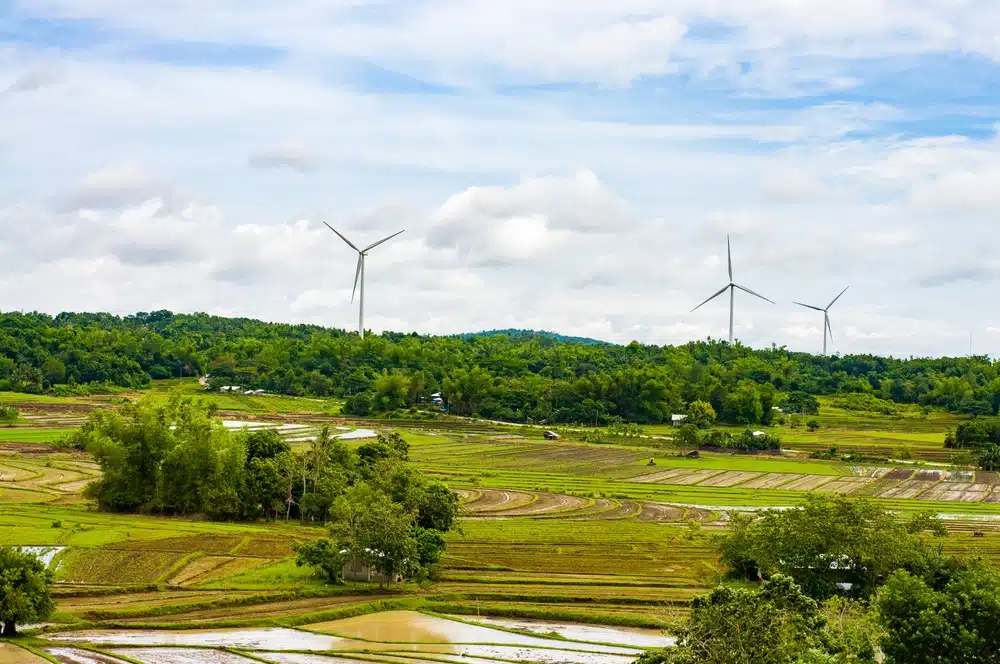Western Visayas is projected to see a sharp rise in electricity demand, with peak load expected to reach 953 megawatts (MW) by 2029, up from 645 MW in 2019. The Regional Development Council 6 (RD-6) attributed the increase to sustained growth in infrastructure and economic activity, as outlined in its 2023 – 2028 plan.
The council warned that current power plants and substations may fall short of meeting future demand, especially in rapidly expanding areas like Iloilo City, Bacolod, and Boracay. It flagged a looming supply gap during evening peak hours, citing the region’s accelerating urban growth.
According to the Department of Energy (DoE), Panay Island’s power demand has already outpaced supply, with consumption at around 420 MW and available capacity just over 400 MW.
The three‑hour outage that struck Panay Island on March 1, 2024, was proof of the region’s shrinking power cushion as demand climbs. The National Grid Corporation of the Philippines (NGCP) said the blackout followed the unplanned loss of Panay Energy Development Corp.’s (PEDC) three units—worth 316 MW—and simultaneous maintenance at Palm Concepcion Power Corp. (PCPC).
Two months prior in January 2024, Panay Island experienced a sweeping three‑day blackout beginning on January 2 when multiple units at PEDC tripped alongside the PCPC plant, isolating the Panay grid.
(Also read: Guimaras Island Barangays Join Power Grid for the First Time)
Hurdles in energy security
RDC-6 identified bureaucratic red tape as a major hurdle to energy development in Western Visayas, citing delays in permits and approvals from agencies and local governments.
The council stressed that timely upgrades and new projects will require stronger coordination across government and greater private sector involvement, especially in funding and maintaining critical infrastructure.
Additionally, the council pointed out that many distribution utilities and electric cooperatives in Western Visayas cannot meet the demands of energy transition and ensure reliable service.
Burdened by outdated infrastructure, financial limitations, and regulatory delays—particularly in securing capital expenditure approvals—they struggle to keep pace. RDC-6 emphasized the need for these providers to modernize operations and improve service delivery to meet consumer expectations and align with global energy trends.
(Also read: Leyte Emerges as a Key Player in Clean Energy Development)
A focus on green energy
To strengthen energy security, RDC-6 said Western Visayas will push for renewable energy initiatives, focusing on indigenous resource development and consumer-driven programs like rooftop solar and the Green Energy Option Program. These efforts aim to cut household consumption, lower costs, diversify the fuel mix, and boost overall capacity and grid resilience.
RDC-6 reported that the DoE has pinpointed 79 clean energy initiatives in Western Visayas, led by solar, hydro, and wind developments. To address the intermittent nature of these sources, the region plans to deploy battery energy storage systems (BESS) and pumped-hydro facilities.
The 2023–2028 regional development plan contains five key approaches to modernize infrastructure and strengthen energy security. The first strategy focuses on encouraging investment in energy innovations and clean technologies, favoring market-driven upgrades over prescriptive models.
The council notes that the private sector often leads in green advancements, and tapping investment networks through public or private financing can accelerate these efforts.
For its second strategy, the council aims to strengthen local expertise by encouraging researchers to build homegrown capabilities in clean power systems and low-emission technologies.
The third strategy entails promoting direct competitive bidding and power supply agreements with renewable energy providers. The council urges utilities, cooperatives, and large power consumers—those with a peak demand of at least 100 kilowatts (kW)—to secure clean energy through open selection processes.
Meanwhile, the fourth strategy involves expanding the region’s power supply by identifying new sites suitable for renewable energy development, aiming to boost overall generation capacity and support future demand.
Lastly, the council calls for stronger efforts to reduce energy use and promote sustainable practices across public and private institutions. It encourages government agencies, local governments, and NGOs to invest in clean power technologies to meet their electricity needs and ease pressure on the grid.
Despite this emphasis on clean energy, Metro Bacolod Chamber of Commerce and Industry CEO Frank Carbon underscored the urgent need to build additional power plants—both conventional and renewable—to keep up with growing electricity demand in the Visayas. He argued that stable baseload facilities must support intermittent renewable sources to ensure consistent and dependable supply across the region.
Sources:
https://www.panaynews.net/wv-power-demand-up-by-953-mw-in-2020/
https://www.panaynews.net/power-struggle-how-can-wv-achieve-energy-security/


